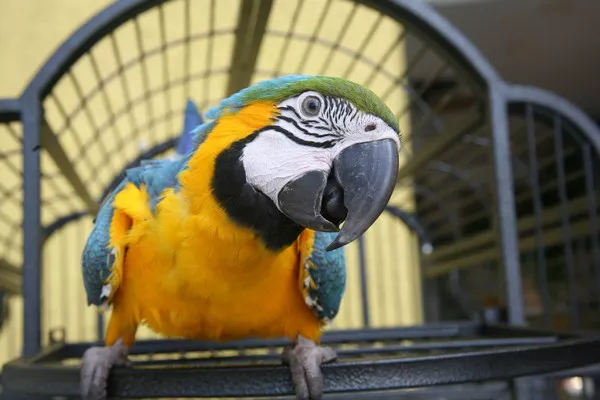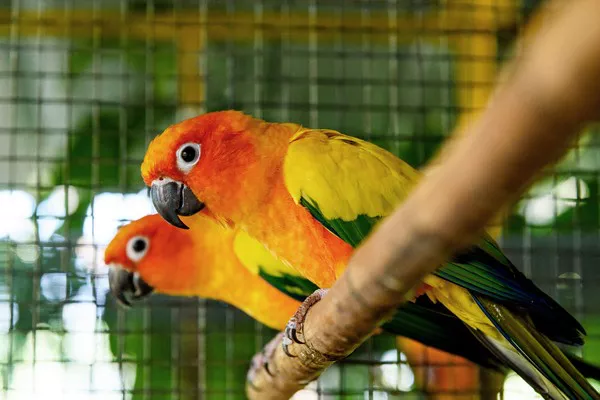Caring for a conure’s beak is an essential part of ensuring the overall health and happiness of your colorful feathered companion. Conures, known for their vibrant personalities and striking plumage, rely on their beaks for many daily activities, from eating and climbing to grooming and playing. As a pet owner, understanding how to care for your conure’s beak can prevent health issues and strengthen your bond with your bird. This article will explore the importance of beak health, signs of potential problems, and practical tips to maintain your conure’s beak in peak condition.
Why Is Beak Health Important?
The beak of a conure is a multi-functional tool used for a variety of tasks. Unlike fingernails or teeth in mammals, a bird’s beak grows continuously throughout its life. This means that it requires regular natural wear to maintain its proper size and shape. A healthy beak allows a conure to:
Eat and Drink: The beak helps break open seeds, crack nuts, and manipulate food for easier consumption.
Groom: Birds use their beaks to preen their feathers, ensuring cleanliness and insulation.
Play and Explore: Conures use their beaks to grasp toys, investigate objects, and engage with their environment.
Climb: Conures often use their beaks as a third limb for climbing and balancing.
Without a healthy beak, your conure could face difficulties in any of these areas, which could lead to stress, malnutrition, or injury.
Understanding the Structure of a Conure’s Beak
A conure’s beak consists of two main parts:
The Upper Beak (Maxilla): The top portion of the beak, which is curved and overlays the lower beak.
The Lower Beak (Mandible): The bottom portion, which moves upward to meet the upper beak during eating and other activities.
The outer surface of the beak is made of keratin, the same protein found in human nails and hair. This keratin layer requires constant upkeep to avoid overgrowth or damage.
Inside the beak are blood vessels and nerve endings, making it sensitive. While the beak appears hard, injuries or infections can cause significant pain and distress.
Signs of a Healthy Conure Beak
A healthy conure beak should exhibit the following characteristics:
Smooth Surface: Free of cracks, flakes, or irregular growths.
Proper Alignment: The upper and lower parts should meet evenly.
Natural Shape: Slightly curved and proportional to the bird’s size.
Normal Activity: Your bird should use its beak frequently and without hesitation.
If your conure’s beak deviates from these traits, it could indicate a problem that requires attention.
Common Beak Problems in Conures
Understanding common beak problems can help you recognize when something is amiss with your conure. Here are some typical issues:
Overgrown Beak:
An overgrown beak occurs when the bird’s natural activities fail to wear down the keratin layer sufficiently. Causes may include a lack of appropriate toys, dietary deficiencies, or underlying health issues.
Cracks or Chips:
Small chips can occur naturally during play or eating, but large cracks or splits may result from trauma or brittle keratin. Such damage can make eating painful and increase the risk of infection.
Discoloration:
A healthy beak is usually uniform in color. Unusual discoloration, such as dark spots or pale areas, could indicate an infection, injury, or nutritional deficiency.
Scaly or Flaky Surface:
A scaly or peeling beak may be a sign of mite infestations, vitamin deficiencies, or fungal infections.
Misaligned Beak (Scissor Beak):
In some birds, the upper and lower beak may grow unevenly, causing difficulty in eating and grooming. This condition might be genetic or the result of trauma.
Soft Beak:
A soft or weak beak may suggest calcium deficiency or other nutritional imbalances, making the beak prone to deformation or breakage.
How to Maintain a Conure’s Beak
Proper beak care combines a well-balanced diet, environmental enrichment, and regular observation. Here are steps to ensure your conure’s beak stays healthy:
1. Provide a Balanced Diet
A healthy beak starts with good nutrition. Conures require a diet rich in vitamins and minerals to maintain the strength and integrity of their beaks.
Pellets: High-quality bird pellets should form the base of your conure’s diet. They are nutritionally balanced and designed to promote overall health.
Fruits and Vegetables: Offer fresh produce like apples (without seeds), carrots, leafy greens, and bell peppers. These foods supply vitamins essential for keratin production.
Calcium Sources: Provide cuttlebone, mineral blocks, or calcium supplements to strengthen the beak and bones.
Avoid Sugary or Processed Foods: These can weaken the keratin and lead to poor beak health.
2. Encourage Natural Beak Wear
Conures instinctively use their beaks for various activities that naturally wear down excess growth. Encourage these behaviors by providing:
Chewable Toys: Wooden toys, shreddable materials, and safe plastic items help your bird file its beak while playing.
Natural Perches: Perches made from untreated wood or natural branches offer a surface for your conure to rub its beak.
Hard Foods: Nuts (unsalted and appropriate for your bird’s size) and other crunchy treats can promote beak wear.
3. Keep the Environment Safe
Accidents are a common cause of beak injuries. Ensure your conure’s environment minimizes risks:
Safe Cage Setup: Avoid sharp edges, flimsy cage bars, or objects that could trap your bird’s beak.
Monitor Playtime: Supervise interactions with unfamiliar toys or objects to prevent mishaps.
4. Regular Grooming and Maintenance
Most conures maintain their beaks independently, but occasional intervention may be needed:
Beak Trimming: If your conure’s beak becomes overgrown, a veterinarian or trained avian specialist can safely trim it. Avoid attempting this yourself, as improper trimming can cause injury.
Cleaning: Clean your bird’s beak with a damp cloth if it becomes dirty from food or other debris. Never use harsh chemicals or abrasive materials.
5. Monitor for Problems
Routine observation is crucial for detecting early signs of trouble. Watch for changes in:
- Beak shape or size.
- Eating habits or appetite.
- Behavior, such as reduced playfulness or grooming.
When to Seek Veterinary Care
While many aspects of beak care can be handled at home, some situations require professional intervention:
Severe Overgrowth or Deformities: If the beak grows abnormally, a vet can assess and address the underlying cause.
Infections: Signs of infection include swelling, discharge, or foul odors.
Trauma: Broken or severely cracked beaks may need emergency care.
Persistent Discoloration or Weakness: These could indicate systemic health issues requiring diagnosis.
Your veterinarian can perform regular health checks and advise on any specific beak care needs for your conure.
Conclusion
Taking care of a conure’s beak is an ongoing process that combines proper diet, enrichment, and vigilant observation. A healthy beak allows your conure to eat, play, and explore comfortably, enhancing its quality of life. By understanding the structure and function of the beak, recognizing potential issues, and taking proactive measures, you can ensure your feathered friend thrives in your care.
With these practices in place, you’ll not only support your conure’s beak health but also foster a deep and lasting bond with your colorful companion.
Related Topics:



















